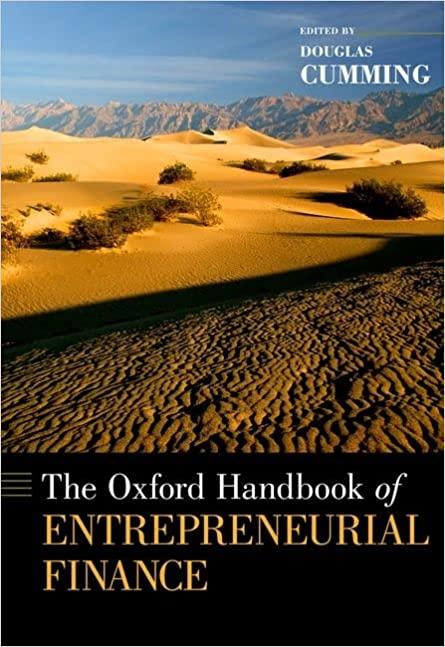Question
1) Consider a one-factor economy. Portfolio A has a beta of 1.0 on the factor and portfolio B has a beta of 2.0 on the
1) Consider a one-factor economy. Portfolio A has a beta of 1.0 on the factor and portfolio B has a beta of 2.0 on the factor. The expected return of A is RA=11% and the expected return of B is RB=17%. Assume a risk free rate of Rf=6%. Assume RedOne M. wants to take advantage of any arbitrage opportunity and is willing to take a short position of $100,000. He approaches you to help him figuring out whether there is an arbitrage opportunity or not? If yes, exhibit it and calculate RedOnes dollar return?
2)
Suppose you have an economy with only two risky assets X and Y. You are given the following information:
| Security | E(R) | Sigma | COV (X,Y) |
| X | 9.168% | 0.096 |
-0.00905 |
| Y | 12% | 0.10 |
Suppose you have a risk-free asset (T-bill) that pays 5% and that the proportions to invest in each risky security to form the optimal portfolio (P*) [in other words, the portfolio forming the tangency point between the CAL with highest slope and the efficient frontier are: w*x=0.5075 and w*y=0.4925. If you want to achieve a rate of return 14% using P* and the T-bill, how much will you invest in each?
3 )On January 1, 2004, ChigaBiga Fund an all-equity mutual fund was established. At that time, funds collected were used to purchase the following securities:
|
|
| 01/01/2004 | 31/12/04 |
| securities | #Shares | price | price |
| A | 250000 | 10.75 | 11.55 |
| B | 150000 | 15.75 | 14.25 |
| C | 210000 | 32.25 | 32.5 |
ChigaBiga issued 5 million shares (or units) to investors. What is the NAV in January 2004?
Step by Step Solution
There are 3 Steps involved in it
Step: 1

Get Instant Access to Expert-Tailored Solutions
See step-by-step solutions with expert insights and AI powered tools for academic success
Step: 2

Step: 3

Ace Your Homework with AI
Get the answers you need in no time with our AI-driven, step-by-step assistance
Get Started


